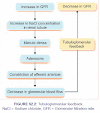Pyridine and piperidine alkaloids:
The following plants have pyridine and piperidine alkaloids in their active constituents;
- Areca catechu
- Lobelia
- Tobacco
Download as:
pyridine piperidine alkaloids pdf
pyridine piperidine alkaloids ppt
Areca nut:
Botanical name:
Areca catechu.
Family :
arecaceae.
Synonym:
betelnut, semen areca, areca.
Part used:
seeds
seeds
Areca is the Spanish and Portuguese term for betel nut and catechu is the East Indian name for astringent extract or juice.
Plant description:
the plant is a beautiful tall spineless feather palm with un-branched stem terminating in a large crown. The inflorescence contains yellowish-white flowers with a sweet smell. The plant is extensively cultivated in India, South Asia and East Indies. The plant contains yellowish fruit of the size of hen’s egg. Each fruit contains a single seed. its seeds are of conical shape with a flattened base.
Externally seed is reddish brown to light yellowish brown in colour with pale lines.
Constituents:
Areca contains many pyridine derivatives alkaloids, with a total alkaloid content of 0.45 %.
These alkaloids include;
- Arecoline.
- Arecolidine.
- Guacine.
- Guavacoline
- & a number of other alkaloids.
Arecoline is a colourless oily liquid alkaloid and is up to 0.2 % of the total.
Other constituents of areca seeds include;
Tannins-- up to 15 %.
Lipids, volatile oils and gums.
Standard:
areca yield not less than 0.35 % of ether-soluble alkaloids.
Uses:
The seeds are cut into narrow pieces and rolled inside betel pepper leaf on which lime is rubbed over and chewed by natives. Known as pan supari and is used as a masticating agent.
They stain the lips and teeth red. Areca is also used as anthelminthic in veterinary practice for tapeworm. The dose in dogs in s-4 gms and in sheep is 4-8 gms.
Lobelia:
Synonym:
indian tobacco, asthma weed or vomit wort.
Botanical origin :
labelia inflate
Family :
Lobeliaceae.
Part used :
Leaves and flowering tops.
Plant description :
The plant is annual herb indigenous to eastern and central united states and Canada. The stem is erect and 0.3-0.5 m in height. The leaves are alternate, ovate or oblong. Flowers are short petiolate and upper sessile. Leaves and flowering tops are collected and flowering tops are collected and carefully dried in shade.
Active constituents:
The plant contains many alkaloids like;
· Labeline
· Labelanine
· Isolobilanine.
The lobilanine occurs as colourless crystalline, slightly soluble in water and readily soluble in hot alcohol.
lobilanine contain pungent;
· Volatile Oils
· Resins
· Lipids
· Gums etc.
Uses:
Labeline possesses similar but weaker pharmacological activities as that of nicotine. For this reason, a 2.0 mg of labelin sulphate is incorporated in tablets and lozenges that are used for breaking tobacco habit.
The majorities of the control studies show that the lobelin has only a placebo effect on decreasing the craving for cigarettes.
Native Americans used labelia to treat respiratory and muscle disorders and as purgatives.
Today it is used to treat asthma and food poisoning.
It has physical relaxant properties and serve as nerve depressant to relax tension.
Tobacco:
Botanical name:
Nicotiana tobacum.
Family:
solenaceae .
Part used:
Leaves
Plant description:
The plant is a tall annual herb, indigenous to tropical America and is widely cultivated in many countries including Pakistan.
Constituents:
Tobacco leaves contain 0.6-9 % of alkaloid nicotine and a small amount of nor-nicotine.
It also contains nicotianna which is called tobacco camphor and is produced during curing.
Uses:
It is a local irritant, CNS poisoning and paralyzant and therefore used as an insecticide.
Nicotine sulphate is also used to control plant lice’s.
It is a CNS stimulant. It is used for smoking, chewing and in snuff.



